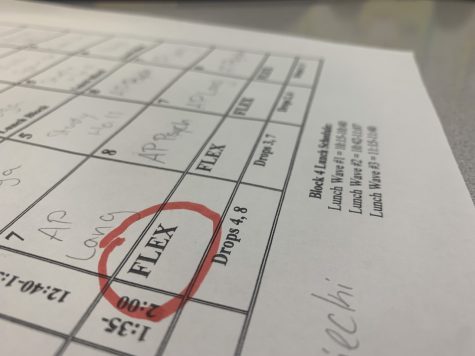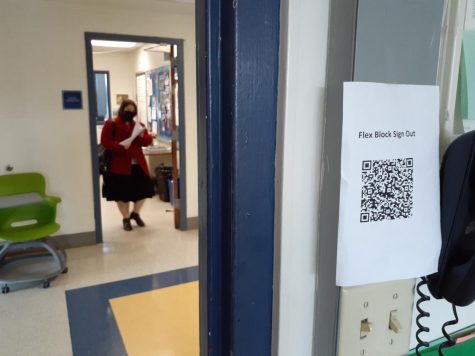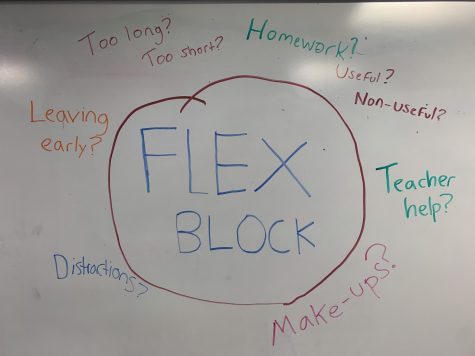Why FLEX Block is Useful- And How It May Be Changing
May 24, 2022

Originally starting as a period at the end of the day during the times of the coronavirus-affected schedule, FLEX is a period of time that allows students to wrap up their academic day with a few useful options. Students can meet with teachers regarding assignments, work on homework alone or with friends, and seniors with jobs or other extracurricular obligations can leave school early and prevent the end-of-day bus route from being stopped up with cars. For a year and a half, it’s been incorporated into the schedule of every student, and has helped many, if not all students with their academic woes, especially if there is no study hall on the schedule that day.
Whether it be seniors whose automobiles can be seen pulling out of parking spots before the buses arrive or my fellow juniors that depend on FLEX to sort out grading mishaps with teachers outside of class, people need this precious period of time. I no longer have a study hall during the second semester and with after-school clubs and my job often filling in time following the end of the school day, it is very helpful to have a period of time to relieve some of my homework load to avoid another night of finishing it late at night. Many of my friends and I have used the period to make up assessments after being out sick and catching COVID, an issue which has no doubt affected many people in the school.

That being said, to debate the importance of FLEX requires a look at why the idea of getting rid of it was floated in the first place. Since two years ago, when FLEX was first conceived, the threat of covid has largely diminished. Additionally, there are some concerns among the faculty of the school that FLEX Block is not used correctly by a number of students. Many people know this, and friends I talked to did not like the notion of a possible removal of the block. Curious to find out what could be happening next year as well as what the current stance is on FLEX at the top, I decided to talk to Principal Chris Rau.
“I’ve never been… completely thrilled with how FLEX Block has turned out,” Rau started. He believes that the idea hasn’t accomplished all of its goals, and that today’s model is still very similar to when it was created, when mass amounts of students were often in quarantine a lot of the time at the beginning of the 2020-2021 school year. “It was trying to find a way to give some additional time for students to connect with teachers. Throughout all of that, there have been both teachers and students that have made great use of it.”
This year, a few changes have surfaced compared to last’s years measures – there is no more remote learning. Quarantine procedures, too, were scaled back, and there have been less and less students at a time out with the virus. Compared to last year’s FLEX, fewer students are leaving as well, with basically only the seniors able to leave the building at 1:30 due to self-owned methods of transportation.
What Rau is concerned about now that the time with the most dire need of FLEX has past is how students are using that time.
“I’m not thrilled with the amount of people that may be wandering around more than they should be. This year, we did passes, and tried to make it official, how students traveled from room to room to try and cut down on the amount of people going where they maybe weren’t supposed to go. Mixed results, I would say,” he said.
However, he reiterated that there has been much positive coming out of the second year of FLEX as well: “I know that I have a lot of teachers – because I’ve done surveys among the teachers – who like FLEX block, and really use it, and meet with students all the time, and on a daily basis. I can name 10 to 15 classrooms right now where I know the teachers use it every day.”
It turns out that there was a sort of unofficial ‘survey’ of students and staff that had gone out a few months ago, with mixed results, according to Rau. There were students that said they used it to meet with teachers and do homework, and some that said they liked it because they could leave the building. Those who didn’t like it, Rau said, were just indifferent to the block: “They likely have no opinion on it, they said that they don’t really use it.”

But there was something else to decipher as well. With this knowledge of the current view on FLEX, the impacts it has had, and the ever-shifting landscape of the pandemic, what should next year be like?
Although not 100 percent set in stone, according to Rau, I was still able to gain two important pieces of information. If FLEX were to return next year (which Rau says is likely due to “still existing heavy support”) it would not be at the end of the day, and it may not be every day.
What does this mean, and why? Rau explained that FLEX may be moved to the middle of the day come next school year, probably before lunch.
“When it [FLEX block] is at the end of the day, there is this enticement to either leave, or just say ‘I just did school all day, I want to take a break from school things even if I have stuff to do,'” he said. “I think that there will be more use of it, or, it will have more use of it, more focus, falling in the middle of the day where everyone is still focused in the center of their day.”
In other words, the plan would likely shift this period to a time of day where students are still in an ‘academic mindset,’ where the school administration hopefully believes that students will have more of an incentive to get work done rather than unwind. Of course, a period in the middle of the day, I feel, would also be a welcome change of pace, a ‘freeform’ time to work at your own pace on what you want to work on, which is after all what FLEX is about.
As for the notion of reduced FLEX frequency? Mr. Rau says that people feel like too much instructional time has been sacrificed, and that the “every day nature” of FLEX Block eats up precious learning minutes.
“It has some positive benefits, but we don’t need five days a week every single day to have FLEX,” he said. He also doesn’t think that FLEX will expand back to its rather long timeframe it had the first year of COVID, citing the fact that teachers had to squeeze lessons into much shorter class periods.
“It will remain on the shorter side. Teachers want all the class times they can get,” he explained.
So what should you garner from this? Yes, nothing is perfect and this free block of time at the end of the day is no exception. However, it has done more positive than negative and I – and likely many others- would be satisfied to see it return for the 2022-23 school year. In the third school year since it was introduced in the midst of a pandemic, perhaps this coming fall FLEX will finally find its balance.
Will the proposed changes result in a more permanent solution for FLEX? Will it be better? I believe that the best positive outcome that could happen is that FLEX stays around. It truly does help people, and in times of record stress in students around the world, and in a pandemic that doesn’t seem to be over quite yet, it really is the most useful tool that I- and many others- could ask for.